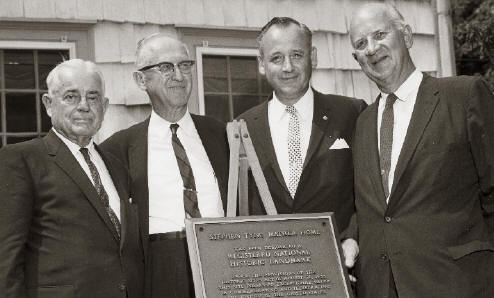From the beginning to the end of the Hartzog administration. It sounds like there were changes in so many ways, and over the last few sessions we’ve talked about those changes. I’m wondering if when you left the Park Service, Mr. Hartzog, and you, Mr. Everhart, looking back (I know you left later, Mr. Everhart), but looking back on that span of years, those nine years, whether you felt like the Park Service was a different agency than before.
W.E.– It’s like when some of the noted people in the Park Service retire and somebody says, “Will we ever have another one like that?” And somebody else says, “Well, we always have.” But I think things are different. I could say I think one of the problems is—and it’s a problem which was inevitable—the Park Service has become a bureaucracy. It had to, because when George and I were there, as I recall, it was in the vicinity of 7,000 employees. It’s now double that and more. And the areas [the Service has] taken on [are more diverse]—imagine having a performing arts center, but I guess that was still in George’s time. Take the Women’s Rights National [Historical Park]. Those are things that even George Hartzog would have said, “Women’s rights?”
So the whole difference in that, and so forth, is such that this is something that nobody can put their fingers on, but I think it has gone from a small, wonderful, compact, highly motivated [organization to a bureaucracy]. All of those [good points] are still present in a different way, but it’s a bureaucracy. So I would say that is what has changed, the organization itself. I don’t know how you prove it.
Not necessarily a product of anything that your tenure …
W.E.– No. Just the times.
G.H.– I think it’s a product of all of those handbooks. Anytime you have staff reading a handbook to determine what to do instead of thinking with their head, that they spend seven, eight, or ten years going to college to learn how to do, they basically vegetate into a bureaucracy.…
I thought we wound up with a much more creative organization than we started with. I say it was because I abolished fifty-six volumes of handbooks, and I had those three little policy manuals, and that was it. If you didn’t find it there, you were supposed to have a solution in your head, not that somebody was going to write it up from Washington. I said to them, “Hell, if I’ve got to write down everything you’re supposed to do, I might as well stop the education level at the sixth grade because by the sixth grade you ought to be proficient in reading and the English language. So I don’t need Ph.D.’s.”
You provide the architecture of the structure, the overarching guidance, and let people think through the rest.
But the hell of it is, you see, they don’t want mistakes. If you’re going to run that kind of organization, you’re going to have mistakes, so you have to have a high tolerance level for mistakes.
We have covered many topics, and this seems like a good place to end. I just wanted to thank you. It’s been a real pleasure to spend time chatting with you.
My pleasure. Such a joy meeting you.


